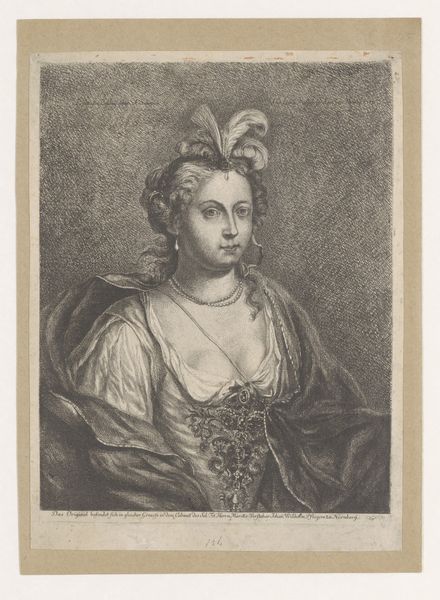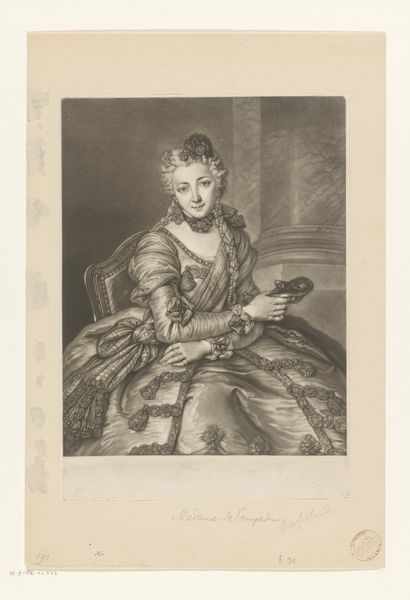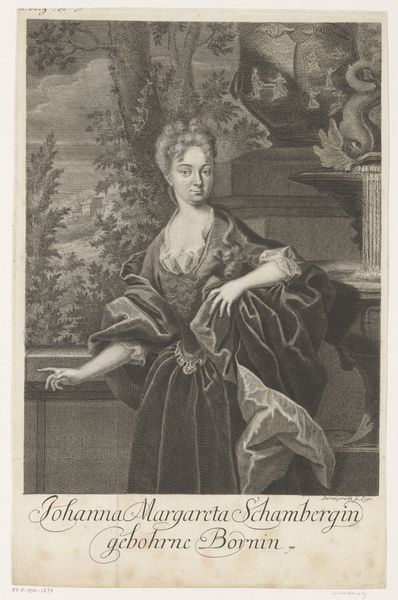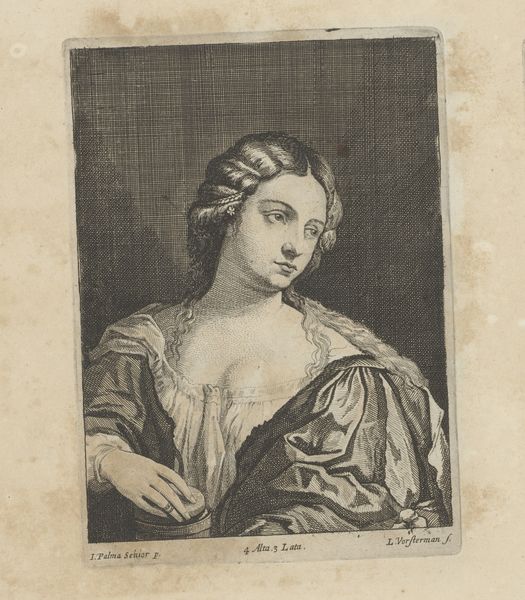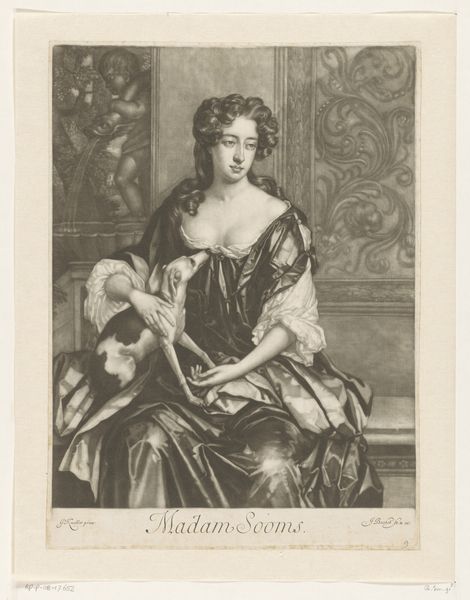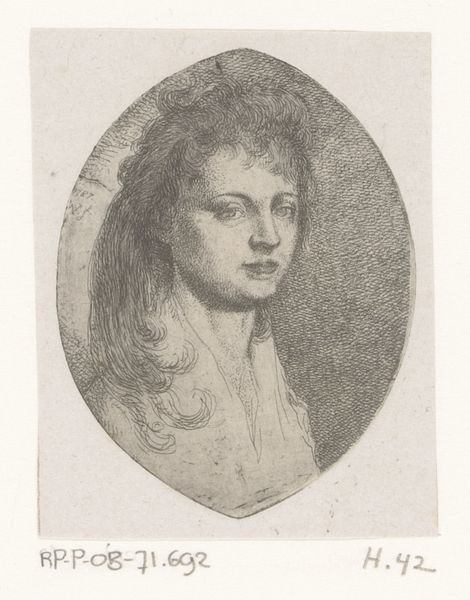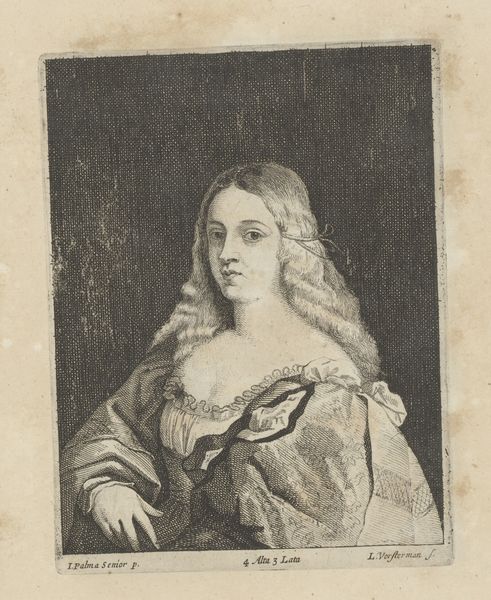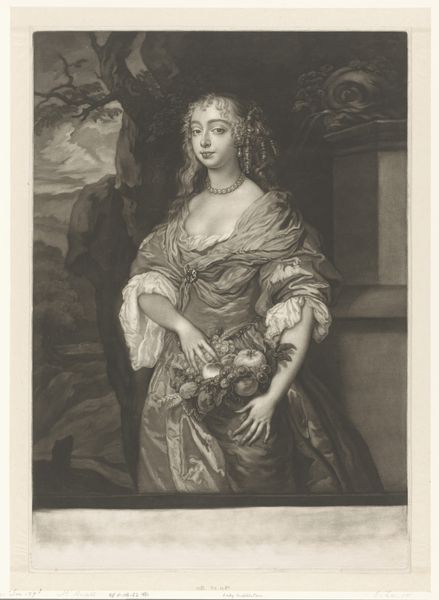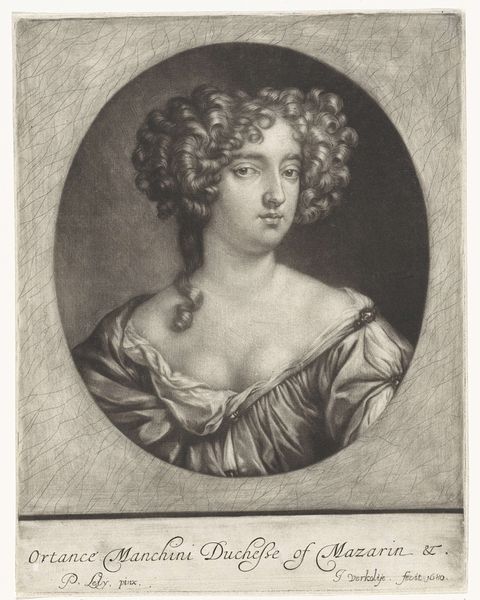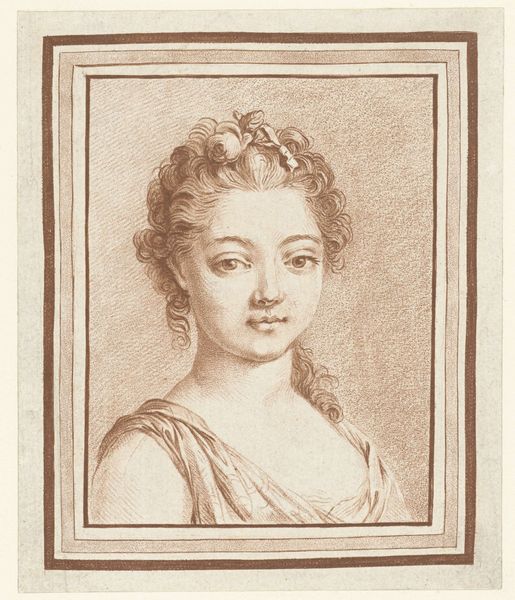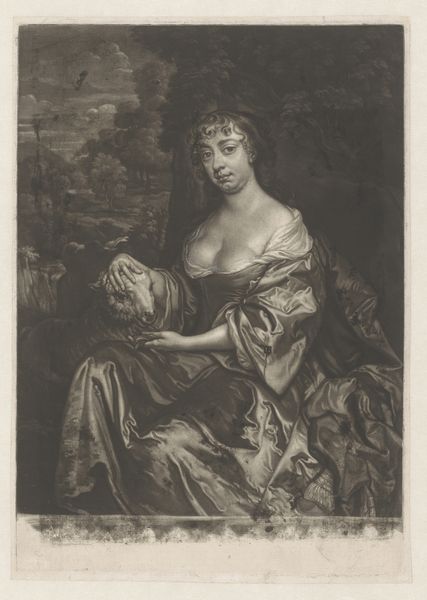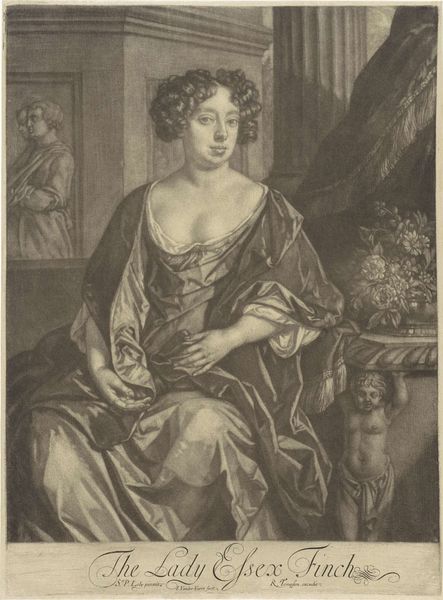
print, engraving
#
portrait
#
baroque
# print
#
figuration
#
engraving
Dimensions: height 160 mm, width 103 mm
Copyright: Rijks Museum: Open Domain
Curator: Looking at this print, a "Self-Portrait" by Elisabeth Sophie Chéron dating from sometime between 1663 and 1711, currently held in the Rijksmuseum, I’m immediately struck by how self-assured she seems. Editor: Indeed. There's a subtle strength emanating from this image. The laurel wreath suggests intellect, while the act of writing itself—that's quite assertive. It’s a clear declaration. Curator: Absolutely, we must remember the historical context here. Chéron, though lauded in artistic circles, still operated within societal constraints as a woman. A self-portrait wasn't simply a personal expression; it was a statement of artistic agency within the Parisian academy and beyond. Editor: And the composition furthers that assertion! The subject gazes directly at the viewer. It commands attention. Notice how her quill hovers over the paper? There’s so much contained potential within that image. Is it verse, perhaps, or some piece of music, or the early strokes of art. What would you make of all these cultural and personal emblems as clues to self. Curator: She was renowned for her poetry, philosophy, and painting—disciplines historically dominated by men. Presenting herself composing perhaps collapses distinctions. I like this attention that Chéron clearly put in displaying herself as an active agent. The print participates in a long discourse about artist identity. Editor: She chooses what she will display as emblems that display intellectual ambition as much as perhaps the more typical displays. Even her garments seem calculated. Not overly ornate, yet undeniably elegant. Almost classical draping. I see that laurel differently. I read the symbolism of Apollo here, associating herself with intellect. It almost feels as though in presenting herself with quill in hand, that here lies the power and right of self presentation, no mere adornment or possession. Curator: Well, by situating the artwork within the structures of academies and social hierarchies, it brings nuance to how we understand not only Chéron's intention, but the larger world of art creation, reception, and political history. Editor: I like being prompted toward reading her emblems within that space between public role and private intellectual life. Curator: Indeed, this print functions as more than a portrait; it's a symbol of intellectual emancipation within strict parameters. Editor: I walk away appreciating just how complex images can function when their symbolism is consciously wielded in challenging conditions.
Comments
No comments
Be the first to comment and join the conversation on the ultimate creative platform.
